The History of Sand Tray Therapy Student #4 Summer 2013
by Perry Birbrager
(Sandy Springs)
The History of Sandtray
Therapy is defined as a series of techniques or methods used to treat metal health, emotional and psychiatric disorders. There are many types of therapy that have been used through history to treat people facing difficult issues in their lives. Many of these methods of therapy are beneficial, and can really help a client overcome certain issues and begin the healing process. However, sandtray therapy has shown to be an effective method that gives clients the opportunity to express who they are and what they are dealing with in their life. The many advocates of sandtray therapy, including Margaret Lowenfeld, Dora Kalff, and Dr. Gisela Schubach De Domenico, have established this type of therapy as credible and effective in delivery of therapy. From it’s origins in the World Technique and its creative and hands on approach, sandtray therapy is a therapeutic tool that is unique in perspective, and effective in its power to heal.
Sandtray therapy utilizes sand, miniature figurines, and a tray or bin with a painted blue bottom and painted sides to represent water and sky. The miniatures act as things in a clients world, both happy and sad. Clients construct their world in the tray based on what they are thinking or feeling. It is the job of the therapist to interpret what the world is to the client, and assist them in finding the hidden meaning behind the world that has been created.
Sandtray therapy is believed to have gotten its start thanks to Margaret Lowenfeld, a British pediatrician and child psychiatrist. Lowenfeld founded the Children’s Clinic for the treatment and study of Nervous and Difficult Children in 1928. Lowenfeld utilized methods of H.G. Wells Floor Games, which advocated the use of models and miniatures to treat children. She found his methods so engaging and effective that incorporated them into her own clinic. She found that children were able to communicate and cope through the tray, almost as a method of escape. As children sometimes have a tough time discussing things that are bothering them, the miniatures and the tray gave them a voice, a place to feel safe to communicate their struggles. Finding success in this method, she coined the term the World Method to refer to her practices.
The World Technique was first shown to the public in 1937 at a clinical conference in Paris. Carl Jung, a well-known psychologist at the time, observed the World Technique that Lowenfeld presented at the conference, and was drawn to its effectiveness in children. It was thought that this would also be an effective method for adults, and the method began to gain popularity with more and more exposure.
Dora Kalff is another prominent figure that has helped shaped sandtray therapy into what it has become today. Kalff worked with Carl Jung in Switzerland, and he encouraged her to pursue a psychological career based on his observations of her ability to work with and understand children. Kalff studied at the Jung Institute in Switzerland, and started to develop an interest in sandtray methods in 1954 when she attended a lecture by Margaret Lowenfeld on the World Technique. Kalff found the World Technique to be intriguing and effective, and thought of the further possibility of developing it further as a tool to use with children. Kalff continued to develop her interest in sandtray when she decided to study the World Technique under Margaret Lowenfeld after she finished studying at the Jung Institute in 1956.
Despite studying under Lowenfeld, Kallf found that many of her methods to not fit her style of therapy, and started to develop her own methods of therapy utilizing the sand tray. Kallf viewed sandtray as a way in which a client creates a world based on their inner state. Kallf believed that through sandtray, the unconscious is made conscious, and personal development toward a unique and authentic self can be achieved. Kalff considered this not only an effective method for children, but also for adults as well. Kalff and Lowenfeld discussed their differences in utilizing the tray, and in the 1950’s they agreed that a new method would officially be created: Sandplay therapy. Kallf’s methods of sandplay therapy are popular across many populations, both in adults and children, and is an effective tool in breaking through barriers and allowing clients to feel safe and comfortable in bringing the unconscious into consciousness.
Another important historical figure in the development of sandtray therapy is Dr. Gisela Schubach De Domenico. Domenico developed the sandtray-worldplay method, which draws from the work of Dora Kallf sandplay therapy. In the 1970’s, Domenico began to use sandtray therapy as a way to access the deepest layers of consciousness, and was a powerful tool in bringing the unconscious into the conscious. Sandtray-worldplay is a method that supports growth and development, and the healing of individuals through the usage of miniatures to create worlds that allow for the presence of the psyche to take effect. Domenico utilized two trays in a clients world, so they would be able to go from world to world if need be. Sandplay-worldplay allows for individuals to become more rooted in themselves and become in touch with nature and the world around them.
As you can see, Sand Tray Therapy has historical roots that have led to it becoming an established and effective method of therapy. Its directive approach and allowance for creativity makes it an appealing method that many adults and children find more effective than typical talk therapy. It will continue to develop over the next several years, and appears to only be getting better and more effective as more people learn about it.
Disclaimer: This website and its content is intended for trained licensed mental health professionals and school certified mental health professionals to use for their clients / students at their own discretion.
*If you ignore the disclaimer above are using these techniques on yourself and you feel any discomfort or upset it is highly suggested that you seek out a licensed mental health professional immediately.
"Beyond Art Therapy" is the concept from Dr. Stangline that combines all creative fields in therapy. It is not the traditional "art therapy" but goes beyond to include sand tray therapy, play therapy, mindfulness, meditation, color therapy, cognitive behavioral therapy, and a vast majority of other therapies.
For any other type of mental health emergency call your local 911 / Police Number immediately.
Dr. Stangline does not offer advice / suggestions to anyone who is not a professional mental health provider, or a student who is studying this field and has questions about mental health programs of study.
See our Exciting Selection of eBooks:
Award Winning:
Creative Counseling 101 eBook
Our Best Seller!
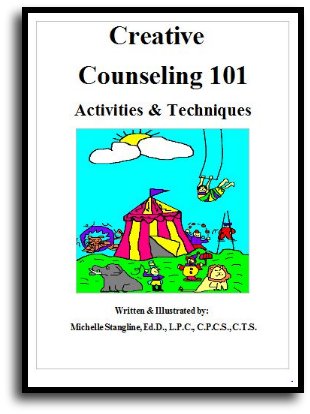
Step By Step Therapy:
Learn how to be a more Creative Therapist with the Book that started it all!
- Graduate School Counseling book used by hundreds of graduate counseling students!
- Includes full color reproducible worksheets with most activities.
- Winner of the Counselor Writer of the Year Award, 2011, Georgia Regional Award
Download Your Copy Today Only $39.95:
See Creative Counseling 101 eBook Information Here:
Get the Set
of all four
eBooks for only $98.95:
An incredible collection of how to do therapy eBooks!
A $159.80 Value,
You Save Over $60!
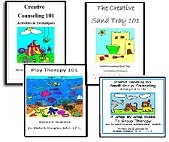
Get your complete set of the Creative Counseling 101.com eBooks by Dr. Michelle Stangline for only $98.95, that's less than $25.00 per eBook (Regular Price is $39.95 for each eBook.).
Your complete set includes:
- Creative Counseling 101
- Creative Group Counseling 101
- Creative Play Therapy 101
- Creative Sand Tray 101
For more information click the link below:
See Complete Set of eBooks For Sale Here:
New!!! "Beyond Art Therapy" 101 eBook
Over 300 pages of Beyond Art Therapy activities and techniques. Learn what I teach graduate counseling students!
See the link below for more information.
Only $39.95
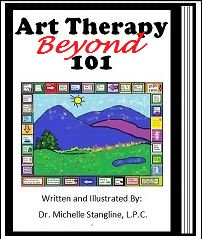
See More Invividual eBooks For Sale:
Sand Tray Therapy 101 eBook:
Learn how to do Sand Tray Therapy or enhance your skills.
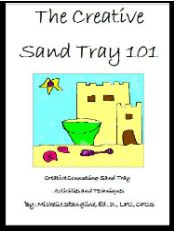
Play Therapy 101 eBook
Learn how to do play therapy or enhance your skills.
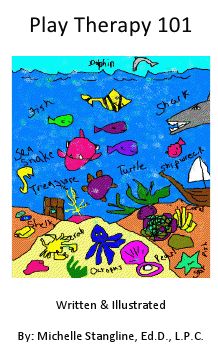
Small Group Counseling eBook For Sale:
Learn how to do creative group therapy and enhance your skills.
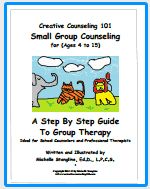
School Counselor Guidance Lesson & Social Stories eBook for sale:
Get a year's worth of school counselor guidance lessons with "Creative Warm & Fuzzy Classroom Guidance Lessons eBook". Introduce your students to the "Warm & Fuzzy Way". Click the link below for more information:
Warm & Fuzzy School Counselor Guidance Lessons eBook
